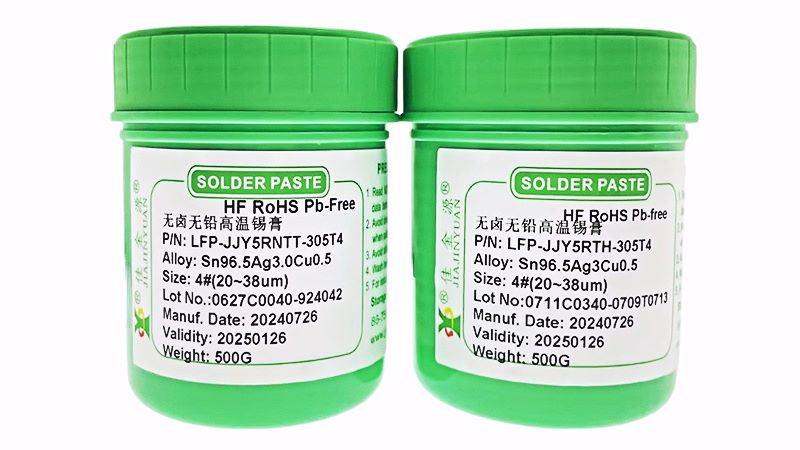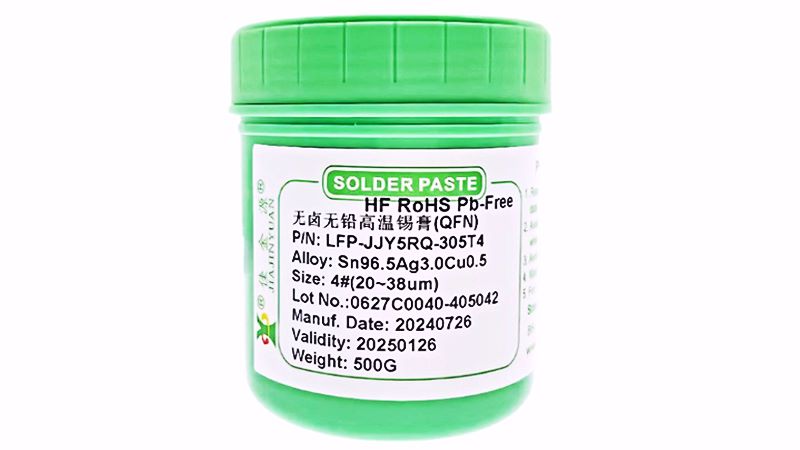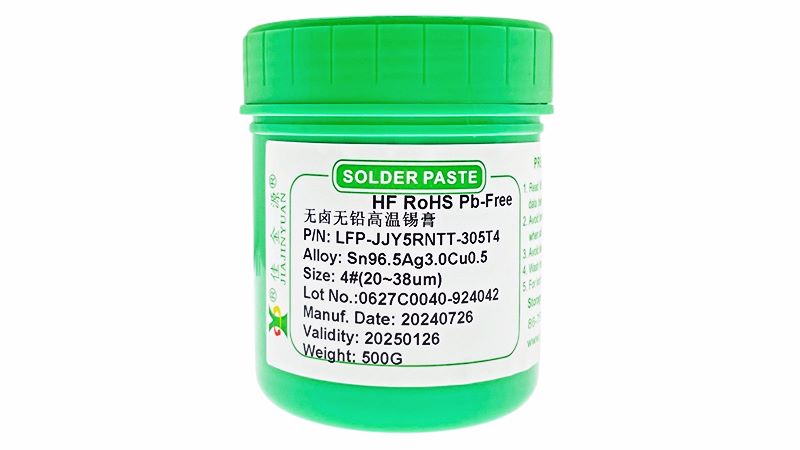In the field of electronic manufacturing,SMTThe surface mount technology (SMT) process holds a pivotal position. However, in the actual production process,SMTThe problem of tin application in surface mount technology (SMT) processing occurs from time to time, which poses a considerable threat to production efficiency and product quality. Next, Shenzhen JJYSolder paste manufacturerHere's a brief introduction to the reasons for not tinning:

First of all, the treatment condition of the pad surface is of vital importance. If there are oil stains, oxides or other impurities on the surface of the solder pad, the wettability and adhesion of the solder will be seriously affected. Therefore, the pretreatment steps of the pads, such as cleaning, degreasing, and micro-etching, must be strictly controlled to ensure that the cleanliness and activity of the pad surface reach the best state.
Secondly, the quality of the solder material is also a key factor affecting the soldering effect. The composition, purity and particle size of solder and other characteristics will directly affect the ease with which it is tinned. If the solder contains excessive impurities or oxides, or if the particle size distribution of the solder is uneven, it may lead to poor soldering effect. Therefore, the selection of high-quality solder materials is particularly crucial.
In addition, the control of welding temperature and time should not be ignored either. Welding temperature and time are two major important factors affecting the wettability and adhesion of solder. If the soldering temperature is too low or the soldering time is too short, the solder may not be fully melted and wet the surface of the pad. Conversely, if the soldering temperature is too high or the soldering time is too long, it may cause problems such as overheating and oxidation of the solder pad or charring of the solder. Therefore, reasonably controlling the soldering temperature and time is an important link to ensure the soldering effect.
Furthermore,SMTThe condition of the component pins in surface mount technology (SMT) processing is also an important factor affecting the soldering effect. If the pins have problems such as oxidation, contamination or deformation, the wettability and adhesion of the solder will be affected. Oxidation or contamination of the pins can reduce the wettability of the solder, while pin deformation may lead to poor contact between the pins and the pads, thereby affecting the soldering effect.
Finally, the soldering environment is also a factor that cannot be ignored in affecting the tinning effect. Humidity, dust and vibration in the environment may all interfere with the tinning process. For instance, excessive humidity may cause condensation on the surface of the solder pad, affecting the wettability of the solder. Dust may contaminate the pads and solder, reducing the quality of soldering. Vibration, however, may lead to poor contact between the pins and the solder pads during the welding process.
To sum up,SMTThere are various reasons why it is not easy to solder in surface mount technology (SMT) processing, including the surface treatment of the solder pad, the quality of the solder material, and the control of soldering temperature and time.SMTThe condition of the surface mount component pins and the soldering environment, etc. To effectively solve this problem, we need to approach it from multiple perspectives, check and optimize the relevant processes and parameters one by one to ensureSMTThe tinning quality and production efficiency of the surface mount circuit board have reached the optimal state.
Shenzhen JJY Industrial Technology Co., Ltd. is a company16As a manufacturer specializing in the research and development and customization of solder paste, lead-free solder paste and leaded solder paste for many years, if you want to learn more about soldering knowledge, please continue to follow JJY Solder Paste Factory and leave a message online to interact with us.





 Tel:+86 0755 88366766
Tel:+86 0755 88366766 Phone:+86 18938660310
Phone:+86 18938660310 Email:sales@jjyhanxi.com
Email:sales@jjyhanxi.com Address:13/F,12/F, Building No. B,Qinghu Technology Park,Qingxiang Rd.,Qinghu Community, Longhua Subdistrict,Longhua District,Shenzhen City,GUANGDONG Province,P.R.C.(518027)
Address:13/F,12/F, Building No. B,Qinghu Technology Park,Qingxiang Rd.,Qinghu Community, Longhua Subdistrict,Longhua District,Shenzhen City,GUANGDONG Province,P.R.C.(518027) Guangdong Public Security Backup 44030902002666 name
Guangdong Public Security Backup 44030902002666 name
 WeChat
WeChat WeChat official account
WeChat official account
